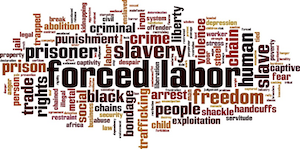Forced Labor Questionnaires: Another Helpful Hint
By: Adrienne Braumiller, Founding Partner, Braumiller Law Group and
Gavin Andersen, Law Clerk, LCB
In February 2024, Customs and Border Protection (CBP) began taking a new approach to Uyghur Forced Labor Prevention Act (UFLPA) enforcement—questionnaires. Once again, the solar industry is among the first targets, vanguards among importers, hacking their way through new regulatory growth, hopefully exposing a clear way through for all who follow. Active enforcement mechanisms like questionnaires—and the Forced Labor Enforcement Task Force (FLETF) itself—are still evolving. But the prohibition on imports “manufactured wholly or in part [by] forced labor” is nearly 100 years old. Importers with serious compliance programs, and who have strategically contemplated their global networks in the UFLPA’s light, already possess the basic tools required for compliance. CBP’s demand regarding forced labor is the same now as it was in 1993, when Congress modified the Tariff Act of 1930 and clarified importers’ duty of reasonable care: Know your value chains and be ready to prove it when CBP asks.
CBP never used to ask—that is why this duty feels new. But prepared importers can reasonably view these questionnaires as a windfall because they clarify the legally necessary scope and depth of a compliance program that includes forced labor, as well as the content of a satisfactory response. In the publications Operational Guidance for Importers and Guidance on Executive Summaries and Sample Tables of Contents: Preparing a UFLPA Applicability Review Submission, CBP details the areas of due diligence, categories of evidence, and specific documents that importers whose merchandise is at risk of detention should be ready to defend. The questionnaires do not depart substantially from that guidance, but—unlike the processes following detention, where the burden is entirely on importers—they provide additional insight into what CBP wants. For each importer, and all related entities in the targeted value chain, questionnaires solicit information about:
- Corporate structure, including forced labor due diligence measures;
- Supply chains generally, including maps and supplier details at each tier;
- Specific “walk-through” entries, meaning value chain mapping starting with specific entries that CBP has identified;
- Accounting and financial practices, including those related foreign affiliates’ sourcing practices;
- Production, tracing each manufacturing input upstream to raw materials;
- Labor; and
- Sales.
By studying CBP’s guidance and considering the questionnaires’ content, importers can prepare boilerplate responses to many elements of these forced labor inquiries and have them ready to hand over at a moment’s notice. A description of an internal compliance program, for example, likely requires little updating. And even where boilerplate responses do not suffice, importers can—and must, under UFLPA’s terms—do most of the work ahead of time by documenting appropriate reasonable care efforts. Importers should begin by identifying the value chains that carry the greatest risk of forced labor. Withhold release orders (WROs), the UFLPA Entity List, the UFLPA Statistics Dashboard, priority enforcement areas, and other government guidance strongly indicate where the government perceives risk. External resources such as interprovincial trade statistics, research reports, investigative reporting, and supply chain analysis tools can also reveal both actual risk and the likely trajectory of CBP’s enforcement efforts. Even by focusing on a single value chain—just one product from one supplier—importers can develop a permanent, replicable mapping and documentation framework that satisfies CBP’s demands.
A common frustration for importers is that even the best due diligence efforts may be virtually fruitless, disproving neither the existence of forced labor in any part of the value chain nor a nexus between Xinjiang and a raw material or a step in the production process. But finding a smoking gun—or proving that there was no gun in the first place—is not the goal. The goal is reasonable care. And the fruit of an importer’s efforts is not certainty—it is control. Importers who build forced labor due diligence into their business practices, who study their products and partners so systematically that they can document whole value chains with the granularity of a CBP inquiry, effectively make a strategic investment in a durable asset.
As if forced labor were not a sufficient inducement to action, the UFLPA is also one of many components in a piecemeal industrial policy. Its aim is to enhance domestic capacity and global competitiveness in critical industries, incentivize development of green technologies, shorten supply chains, and bolster national security. This industrial policy began to take shape under Obama and has persisted through two subsequent administrations, manifesting more fully under Biden’s 2021 Bipartisan Infrastructure Act, 2022 Inflation Reduction and CHIPS Acts, and related laws that fund clean energy projects and restrict trade with global competitors. Beyond forced labor, enhanced enforcement in domestic content requirements, foreign investment, sanctions, and similar areas show that this evolving industrial policy has teeth. Initiatives such as the Indo-Pacific Economic Framework, the Global Arrangement on Sustainable Steel and Aluminum, and the US-EU Trade and Technology Council show that it has an appetite. By earnestly and actively complying with the UFLPA, importers move to the frontline of a greater bipartisan effort to reposition the US economy for challenging times ahead.
Braumiller can help. Reasonable care requires more than just software and affidavits—it requires a whole program, a suite of practices that put the importer in control of forced labor risk. CBP’s new questionnaires, along with earlier guidance, point the way forward. If you are an importer, then the government has placed you on notice—arguably in 1930—so get to know your value chains and be ready to prove it when CBP asks.

























